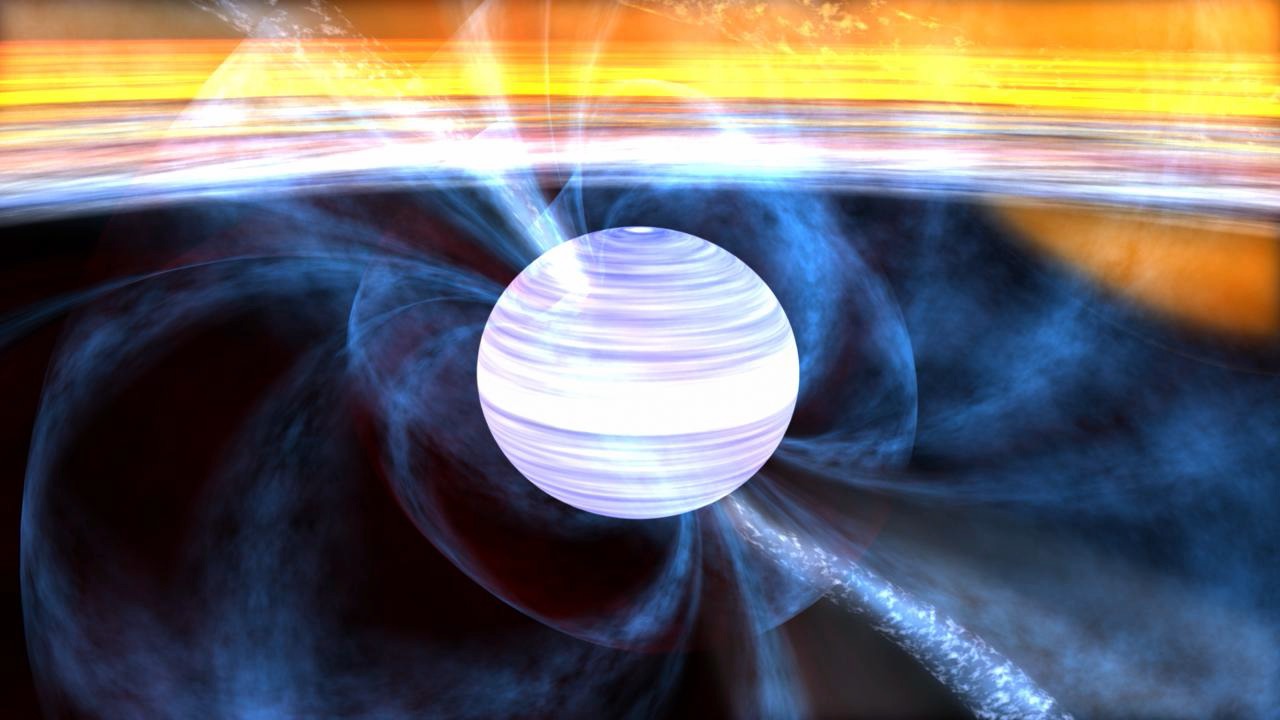Scientists have studied the pulsar PSR J1227-6208. This star has undergone amazing changes during its lifetime. The flow of matter from the companion star spun it around. Now researchers have learned how this affected its parameters.

“Recycled” pulsars
Astronomers from the Max Planck Institute for Radio Astronomy (MPIfRA) in Bonn, Germany, and other places have studied the “remodeled” pulsar known as PSR J1227-6208. A new study published July 18 on the arXiv preprint server provides important information about the nature of this pulsar.
Pulsars are highly magnetized neutron stars that rotate and emit a beam of electromagnetic radiation. They are usually detected as short bursts of radio emission, but some can also be observed with optical, X-ray and gamma-ray telescopes.
“Recycled” pulsars are neutron stars that have been spun up by accreting matter from a companion star in a close binary system. The more massive the neighbor at the time of mass transfer onset, the slower the final rotational velocity of the recycled pulsar. Therefore, secondary pulsars with massive companions, such as white dwarfs (WDs) composed of carbon monoxide (CO) or oxygen/neon/magnesium (ONeMg) or neutron stars, rotate much slower than millisecond pulsars (MSPs) with helium (He) WD companions.
Parameters of the neutron star PSR J1227-6208
PSR J1227-6208 is a moderately “recycled” pulsar with a rotation period of approximately 34.5 milliseconds. It has a massive companion with a minimum mass of about 1.27 solar masses (assuming the mass of the object is 1.35 solar masses). The orbital period of the system is 6.72 days.
A team of astronomers led by Miquel Colom i Bernadich of MPIfRA took a closer look at PSR J1227-6208. Using the Parkes and MeerKAT radio telescopes, they analyzed the emission and timing of this pulsar and found that it belonged to a new class of massive recycled pulsars, ONeMg, containing a white dwarf.
Based on the data collected, the researchers calculated that the mass of the pulsar is between 1.16 and 1.69 solar masses, while the mass of the companion star is estimated to be between 1.21 and 1.47 solar masses. The system has a very small orbital eccentricity, at 0.00115.
Pulsar PSR J1227-6208 and its companion
According to the study authors, the estimated masses and orbital eccentricity almost rule out the possibility that the companion could be a neutron star, in favor of the white dwarf scenario. They hypothesize that this object is a massive ONeMg white dwarf close to the Chandrasekhar limit (the maximum mass of a stable white dwarf, about 1.4 solar masses).
The astronomers noted that, given the relatively large rotation period of PSR J1227-6208, the pulsar probably accreted no more than 0.0045 of the Sun’s mass during the recirculation process. However, they added that if the accretion occurred over a time period much shorter than 100,000 years, this would indicate either a super-Eddington accretion rate or a large spin-up efficiency.
The study shows that the pulse profile of PSR J1227-6208 has a steep spectral flux density index and a flat scattering index. It was also found that about 15% of the pulsar’s emission is linearly polarized.
According to phys.org


